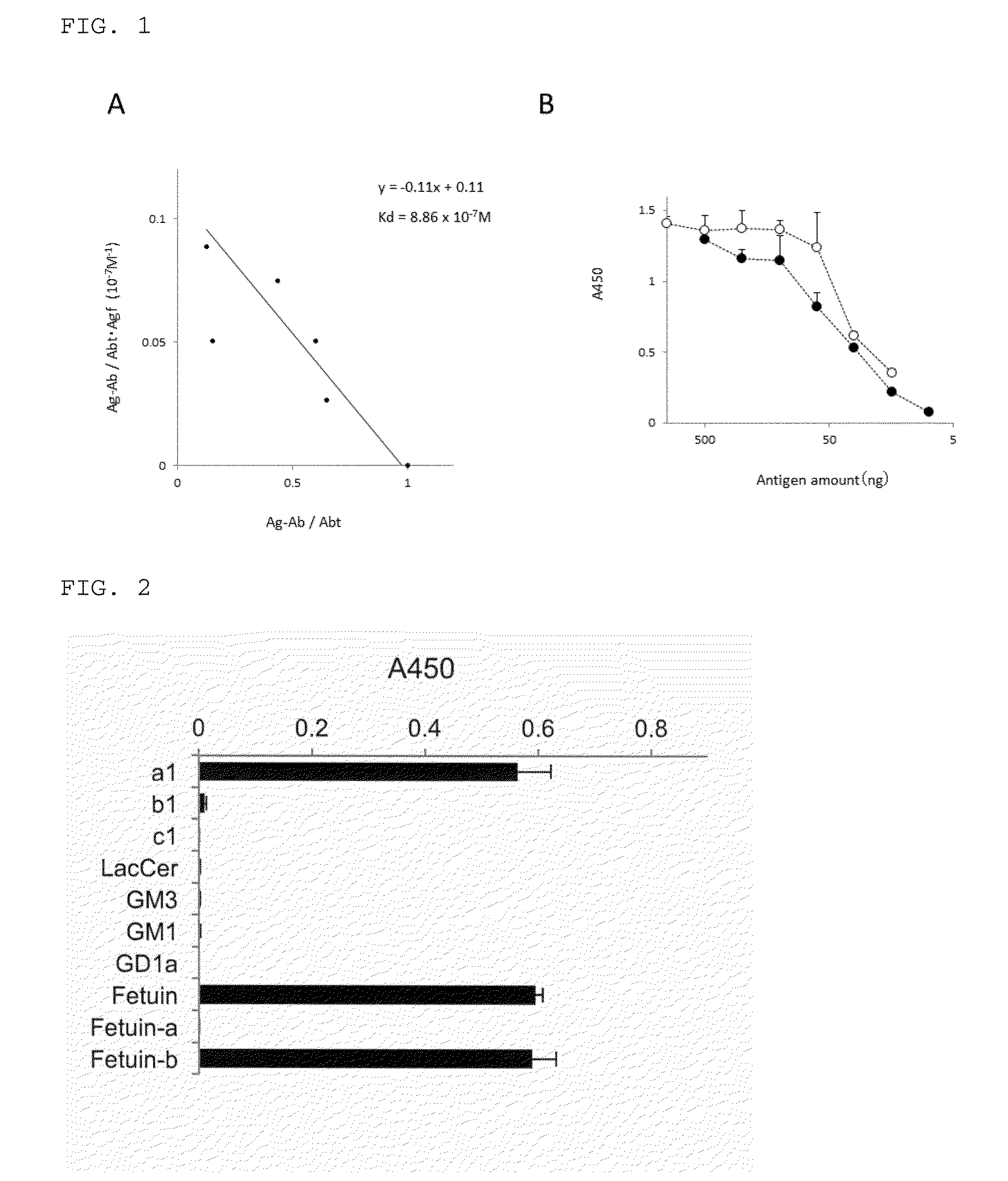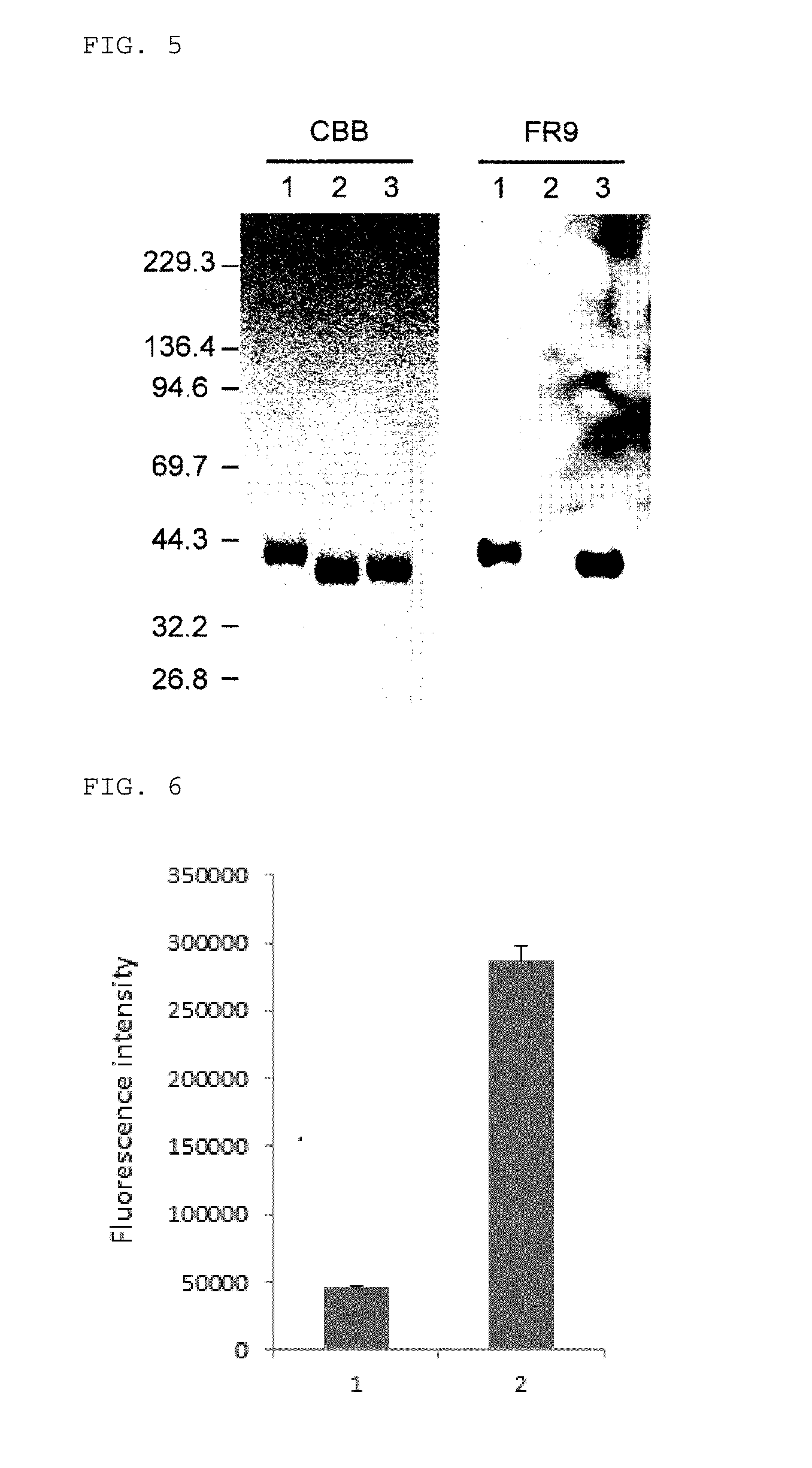Monoclonal antibody recognizing sialylated sugar chains
a monoclonal antibody and sugar chain technology, applied in the field of monoclonal antibodies, can solve the problems of insufficient development of immune system, limited use, insufficient structure identification or detection of sugar chains, etc., and achieve the effect of high affinity, effective diagnosis tool, and effective screening
- Summary
- Abstract
- Description
- Claims
- Application Information
AI Technical Summary
Benefits of technology
Problems solved by technology
Method used
Image
Examples
example 1
Preparation of Glycolipid Antigen “CDw75-C12L”
[0084]3,4,6-Tri-O-acetyl-2-deoxy-2-(4,5-dichlorophthalimide)-D-glucopyranosyl bromide (Shimizu H et al., Biosci. Biotech. Biochem., 60, 73-76, 1996) as a sugar donor derived from N-acetylglucosamine was coupled to 2-azide alkyl alcohol CH3(CH2)9CH(N3)CH2OH as an acceptor by glycosylation reaction followed by deprotection of hydroxyl group and reduction of side azide group to synthesize a glucosamine derivative having an amino group, GlcNAc-CH2CH (NH2) (CH2)9CH3.
[0085]The obtained intermediate compound was subjected to an enzyme reaction using β1,4-galactosyl transferase according to the following reaction scheme (2), and then the sugar chain was extended to have transformation into LacNAc-CH2CH(NH2)(CH2)9CH3. It was further subjected to an enzyme reaction using α2,6-sialyl transferase to yield a sialyl trisaccharide. Subsequently, the side amino group of 6′-Sialyl-LacNAc-CH2CH(NH2)(CH2)9CH3 and lignoceric acid were condensed by an amidat...
example 2
Preparation of Hybridoma Producing Anti-CDw75 Monoclonal Antibody
[0087]According to a liposome method (method by Brodin et al.; Eur. J. Immunol., 16, 951-956, 1986), 100 μg of the glycolipid antigen “CDw75-C12L” were admixed with phospholipid, cholesterol, and Lipid-A in methanol solution, and after evaporation and dissolving in PBS buffer at 50° C., a liposome was formed. By using the liposome as an immunogen, a mouse (C3H / HeN strain) was immunized.
[0088]Immunization with the immunogen was performed subcutaneously, four times with an interval of 2 weeks. Two weeks later, abdominal immunization was performed, and spleen cells were collected three days thereafter. According to cell fusion with myeloma cell Sp1 strain, a hybridoma cell was prepared.
[0089]First, from the hybridoma cells which have been cultured in 8 plates with 96 wells so as to have one colony / well (768 wells in total), the culture supernatant was collected in an amount of 0.05 ml for each, and by having the absorbanc...
example 3
Evaluation of Monoclonal Antibody Produced by Hybridoma FR9
(3-1) Affinity for CDw75
[0094]With regard to the affinity of the monoclonal antibody included in the culture supernatant of FR9 cells (hereinbelow, also referred to as “FR9 antibody”) for CDw75, an evaluation was made by determining the dissociation constant (Kd value) having CDw75-containing Fetuin as an antigen. As a result, the Kd value was found to be 8.86×10−7 M. Since the Kd value of an antibody or lectin binding to a sugar chain is generally 1×10−3 to 1×10−6M, the developed antibody was found to have high affinity for the CDw75 sugar chain (FIG. 1A).
[0095]For comparison, same calculation as the above was tried to obtain a Kd value of the commercially available anti CDw75 antibody (LN-1). However, the antibody reaction of LN-1, which has a glycolipid or a glycoprotein containing CDw75 as an antigen, showed a result below the detection limit of ELISA, and thus it was confirmed to be an antibody having extremely low affi...
PUM
| Property | Measurement | Unit |
|---|---|---|
| affinity | aaaaa | aaaaa |
| structure | aaaaa | aaaaa |
| chain structure | aaaaa | aaaaa |
Abstract
Description
Claims
Application Information
 Login to View More
Login to View More - R&D
- Intellectual Property
- Life Sciences
- Materials
- Tech Scout
- Unparalleled Data Quality
- Higher Quality Content
- 60% Fewer Hallucinations
Browse by: Latest US Patents, China's latest patents, Technical Efficacy Thesaurus, Application Domain, Technology Topic, Popular Technical Reports.
© 2025 PatSnap. All rights reserved.Legal|Privacy policy|Modern Slavery Act Transparency Statement|Sitemap|About US| Contact US: help@patsnap.com



